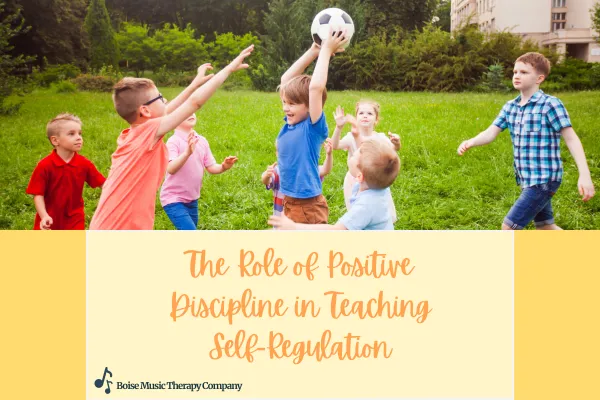
The Role of Positive Discipline in Teaching Self-Regulation
Mastering Emotional Awareness: The Power of Positive Discipline in Teaching Self-Regulation
In a constantly evolving world, navigating emotions and exhibiting self-control is essential for success. Teaching self-regulation and emotional awareness is not just about managing impulses; it's about fostering resilience, empathy, and adaptability. One potent approach to nurturing these vital skills is through positive discipline.
Understanding Self-Regulation and Emotional Awareness
Self-Regulation: The Key to Success
Self-regulation encompasses managing one's thoughts, emotions, and behaviors in a way that aligns with personal and societal expectations. It involves controlling impulses, handling stress, and persevering through challenges. Strong self-regulation makes individuals better equipped to make thoughtful decisions, develop healthy relationships, and achieve long-term goals.
Emotional Awareness: The Heart of Empathy
Emotional awareness involves recognizing, understanding, and managing one's own emotions while also being attuned to the feelings of others. Individuals can cultivate empathy, effective communication, and conflict-resolution skills by fostering emotional intelligence. Emotional awareness lays the foundation for healthier relationships and a more harmonious social environment.
The Role of Positive Discipline in Teaching Self-Regulation and Emotional Awareness
Creating a Supportive Environment
Positive discipline centers around mutual respect, understanding, and proactive teaching rather than punitive measures. It promotes a nurturing atmosphere where mistakes are seen as opportunities for learning and growth. Creating this environment makes individuals feel safe expressing emotions, which is essential for developing emotional awareness.
Teaching Self-Regulation through Positive Reinforcement
Instead of correcting negative behaviors, positive discipline encourages highlighting and reinforcing positive behaviors. By acknowledging and praising instances of self-regulation, individuals are motivated to continue exhibiting these behaviors. Consistent positive reinforcement strengthens the development of self-regulation skills.
Building Emotional Awareness through Communication and Empathy
Positive discipline emphasizes open and empathetic communication. Encouraging discussions about emotions and actively listening to individuals' feelings cultivates emotional awareness. When children and adults feel understood and supported, they become more adept at understanding and managing their emotions.
Practical Strategies for Implementing Positive Discipline Techniques
Establishing Clear Expectations
Setting clear and reasonable expectations helps individuals understand the boundaries and expected behaviors. This clarity aids in self-regulation by providing a framework for appropriate conduct.
Encouraging Problem-Solving and Decision-Making Skills
Promoting problem-solving skills allows individuals to navigate challenges independently. Encouraging them to make decisions and evaluate consequences fosters self-regulation and critical thinking.
Modeling Emotion Regulation
Adults serve as powerful role models for emotional regulation. Demonstrating healthy ways to manage emotions teaches individuals effective strategies for handling their feelings.
Practicing Mindfulness and Emotional Check-Ins
Regular mindfulness exercises and emotional check-ins enable individuals to reflect on and regulate their feelings effectively. These practices facilitate self-awareness and emotional control.
Teaching self-regulation and emotional awareness through positive discipline is a transformative approach that extends beyond behavior modification. It teaches lifelong skills invaluable for personal well-being, relationships, and thriving in diverse social settings. By embracing the principles of positive discipline, we foster environments that empower individuals to master their emotions and lead fulfilling, balanced lives.
